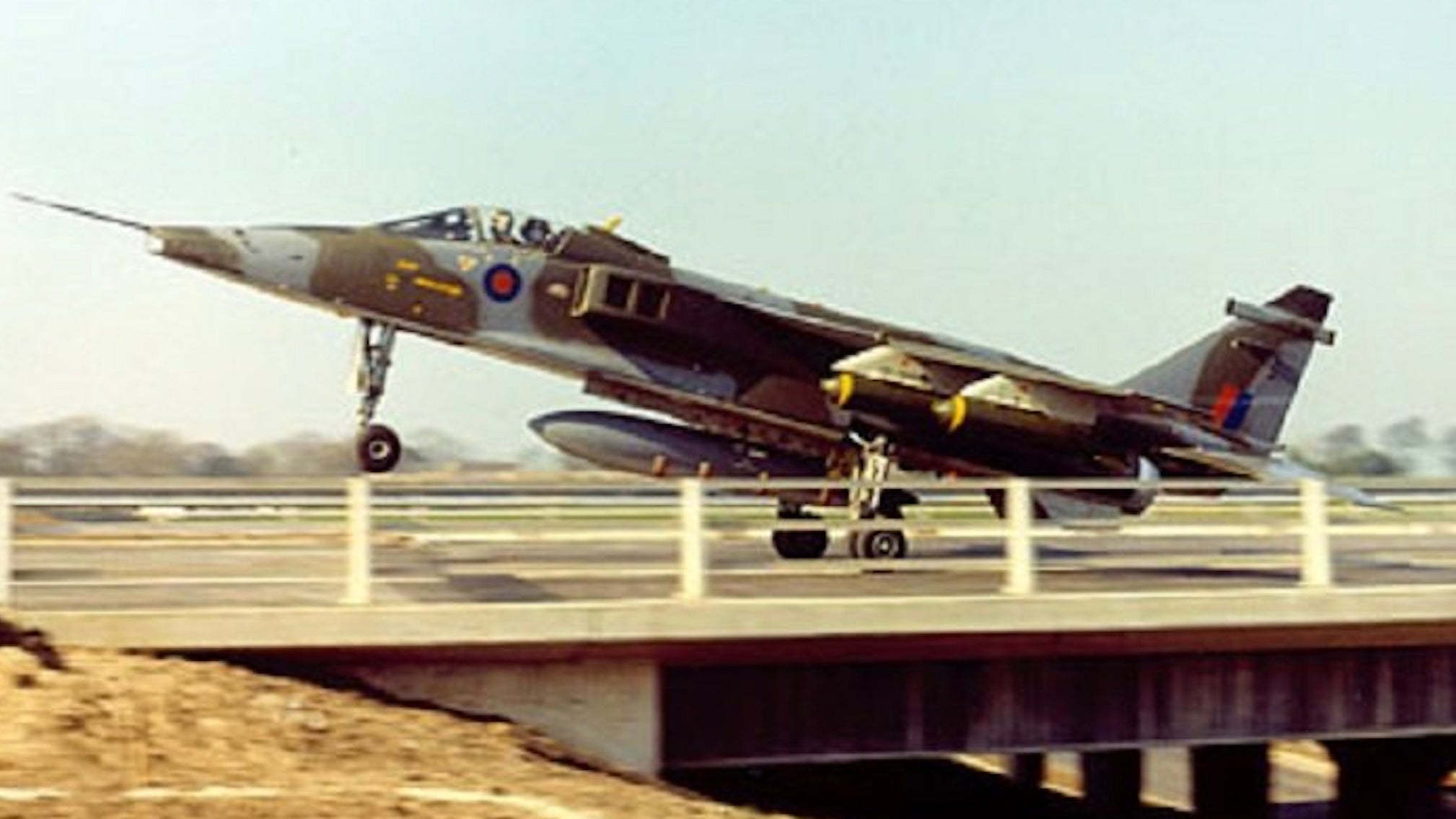In an unmistakable throwback to the years of the Cold War, the U.K. Royal Air Force is preparing to undertake snap exercises that will see its fighter jets operate from civilian airfields and perhaps even strips of highway. The initiative is part of plans for dispersed operations in times of tension, recognizing the fact that potential Russian aggression would very likely target the U.K.’s handful of fighter bases as a matter of priority.
The development was announced yesterday by the Daily Telegraph newspaper, which quoted Air Chief Marshal Mike Wigston, the Chief of the Air Staff. The commander of the Royal Air Force (RAF) unveiled plans for Exercise Agile Stance, during which the service’s fighters will receive ‘no-notice’ orders to deploy to alternative locations, beginning this fall. These locations will likely comprise civilian airfields able to accommodate them, but “other improvised locations” were also mentioned. These could include U.K. highways, which would revive a practice conducted — albeit on a limited basis — during the Cold War.
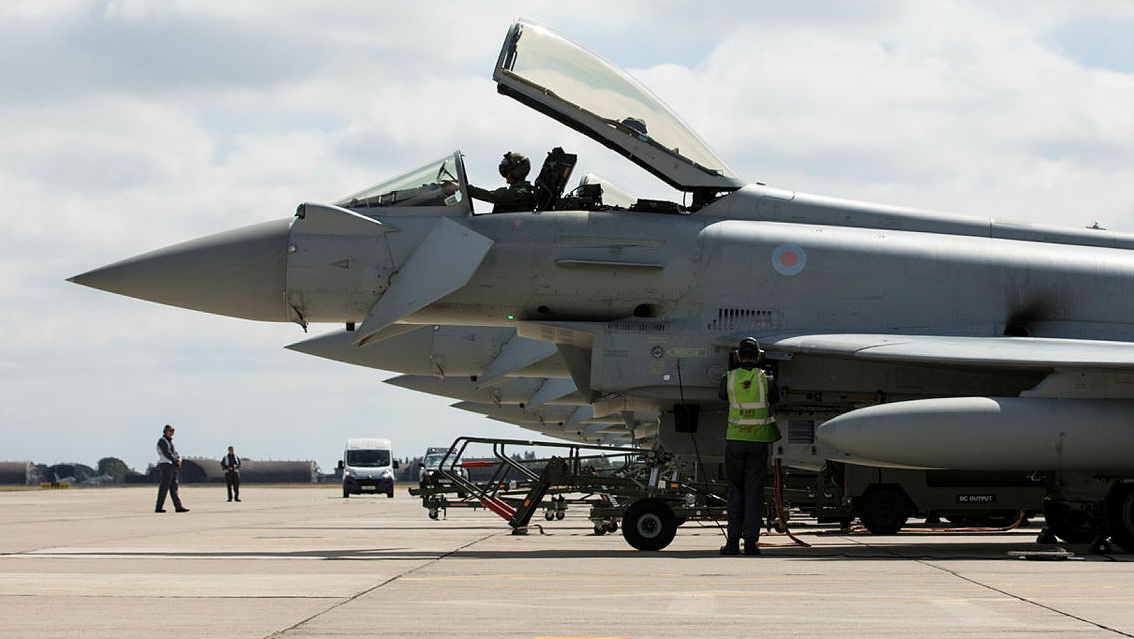
“We’ll be re-learning how to disperse,” Wigston told the newspaper, pointing out that if “the arsenal [of advanced cruise missiles] Putin has been bragging about” was stationed in the Russian exclave of Kaliningrad “we’d be in range.” The Chief of the Air Staff also spoke of relocating “all my Typhoons […] on 12 bases,” although it’s unclear whether that is a firm aspiration.
The fighters would be deployed in ‘fighting fours,’ detachments of four jets each. Once at their temporary locations, the jets will be provided with forward arming and refueling points (FARPs) while troops from the RAF Regiment will provide force protection.
The missile threat Wigston was referring to is very likely the controversial 9M729 ground-launched cruise missile, also known as the SSC-8 Screwdriver. According to NATO, this weapon violated the terms of the Cold War-era Intermediate-Range Nuclear Forces Treaty, or INF, and it directly led to that agreement’s final collapse last year. With a range of around 1,500 miles, the 9M729 would be able to hit any target in Western Europe when launched from Kaliningrad. You can read more about what is known as the missile in this past War Zone piece.
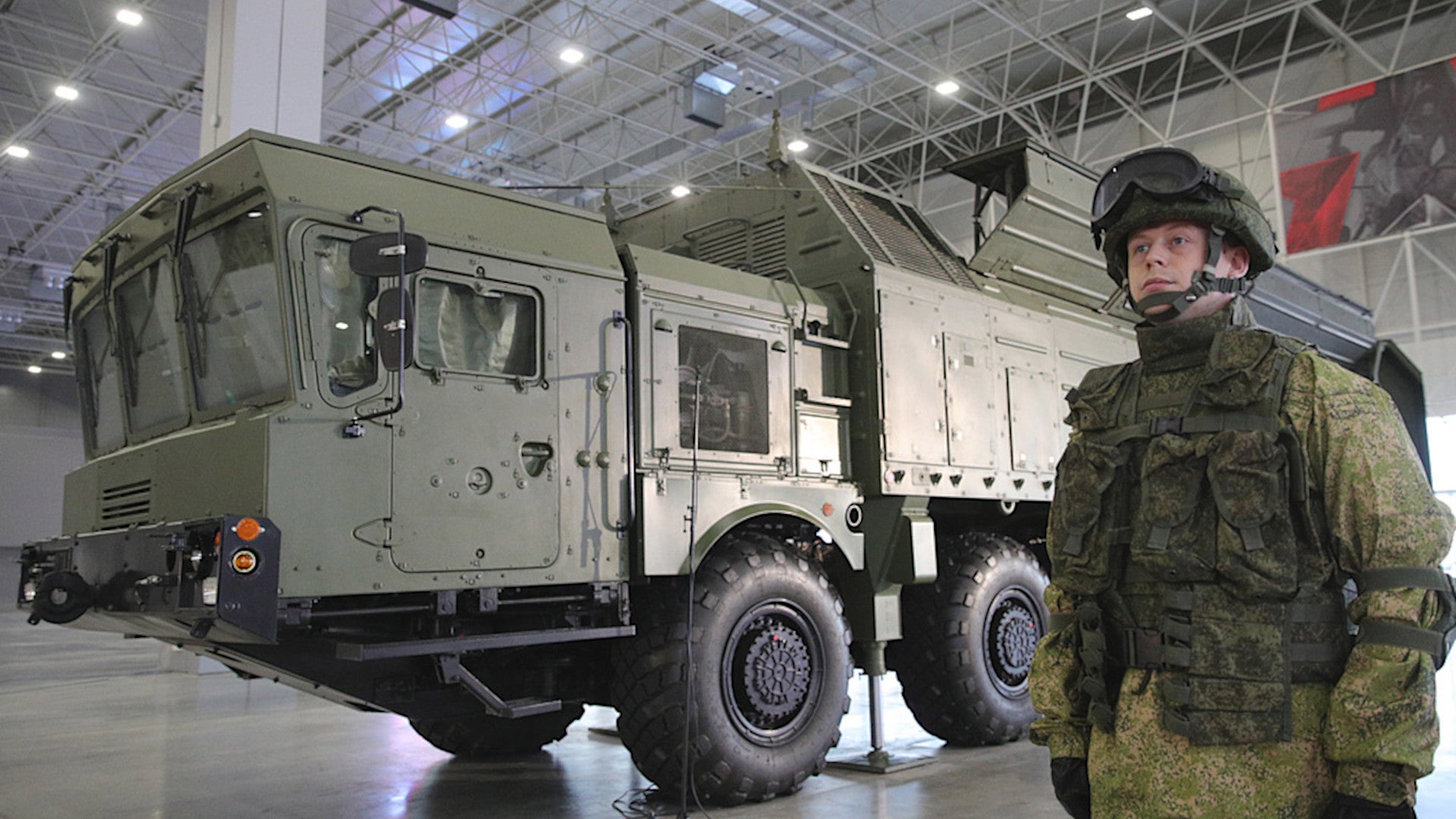
Agile Stance will comprise a series of maneuvers testing the RAF’s ability to move its fighters rapidly from their home bases and make it “harder” for a potential enemy to target them with a pre-emptive strike, whether that involves a cruise missile, ballistic missiles, airstrikes, or other actions. Wigston, who was interviewed during his recent visit to the U.S. Pacific Fleet at Pearl Harbor, used the example of the Japanese attack on that location to emphasize the vulnerability of the RAF’s fighter bases to a surprise strike.
The U.K. Chief of the Air Staff spoke unusually forcefully about what he described as the increasing threat posed to the United Kingdom by Russia over recent years. “They’ve murdered people on the streets of Britain and annexed part of Europe,” he said, referring to the Skripal poisoning case in England and the illegal occupation of Crimea. “They’ve got the threat systems. We are concerned about them. In the worst-case scenario, things we hold dear — like national infrastructure — will be in range of Russian missiles.”
The U.K. Secretary of State for Defense Ben Wallace also recently brought attention to the apparent threat posed by Russia — in this case, its expanding maritime capabilities — when he labeled the country as the U.K.’s “number one adversary threat,” last May. This was evidenced, among others, by a pronounced uptick in Russian Navy vessels visiting waters around the United Kingdom.

“I’m not interested in paving over Lincolnshire again,” Wigston told the Daily Telegraph, “and there will be the challenge of having armed aircraft on civilian airfields. That reference was to the World War II airfield expansion program that turned the eastern corner of England into something approaching a giant bomber base, from which the RAF and the U.S. Army Air Force launched its offensive missions against the German Reich and occupied Europe.
Today, Lincolnshire is home to Coningsby, one of the RAF’s two frontline Typhoon fighter bases, with the other at Lossiemouth in the north of Scotland. The U.K.’s other fighter jet, the F-35B Lightning is meanwhile located at Marham in eastern England, with no plans for further bases in the future, although this aircraft’s short takeoff and vertical landing (STOVL) capability makes it particularly suitable for operations from shorter airstrips.
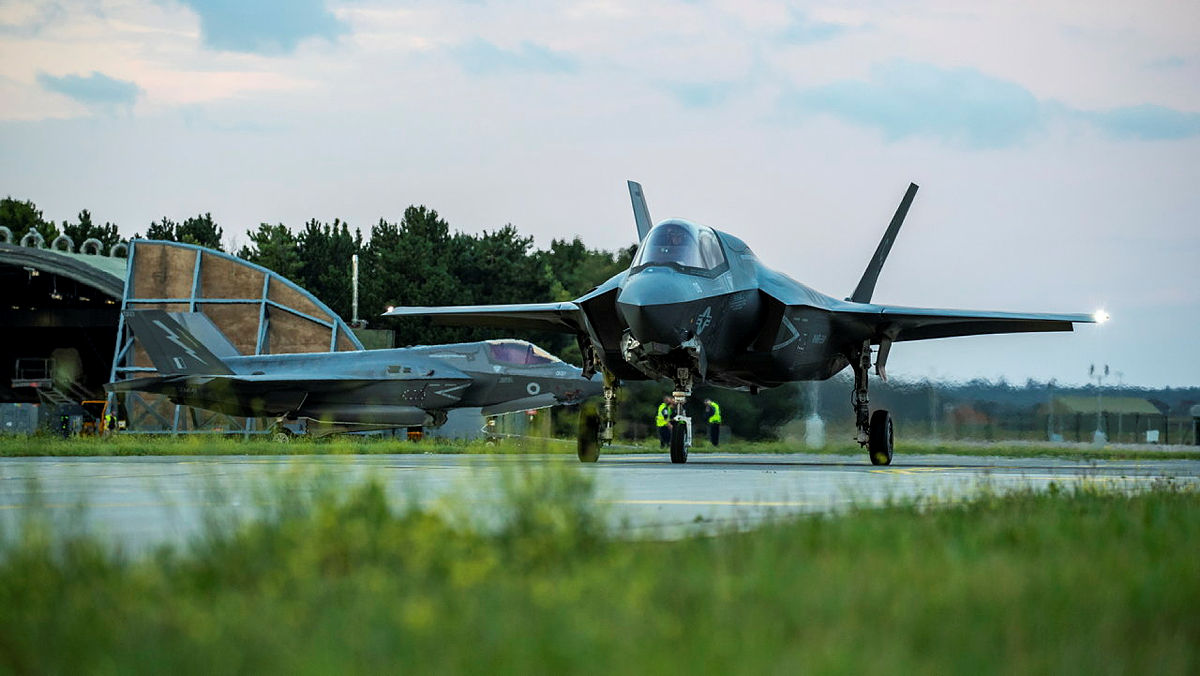
“We should look at this as a national challenge and look at the wealth of airstrips we have in the UK,” Wigston added. “It sounds a bit Cold War-ey, but we have a pressing requirement to remember how to do it.”
The idea has also found support among retired senior RAF officers. “Dispersal has always been a useful tool in the defense ‘box of tricks,’ but rarely used or practiced in recent decades,” Air Marshal Greg Bagwell, a former deputy commander of the service tweeted. “Good to practice and learn lessons, whilst also acting as a deterrent and sign of intent against potential foes considering the option of a ‘lightning strike,’” the former Cold War Tornado strike pilot added.
As for the airstrips that will be used, the candidate civilian airfields would likely involve the less frequently used ones, perhaps including those located further from major population centers. While there are over 40 airports around the country, some of them are among the busiest in Europe. There are also some airbases still in military hands but not used on a regular basis, like Leuchars Station in Scotland, which has recently hosted Typhoons and P-8 Poseidon maritime patrol aircraft while resurfacing work was underway at Lossiemouth.
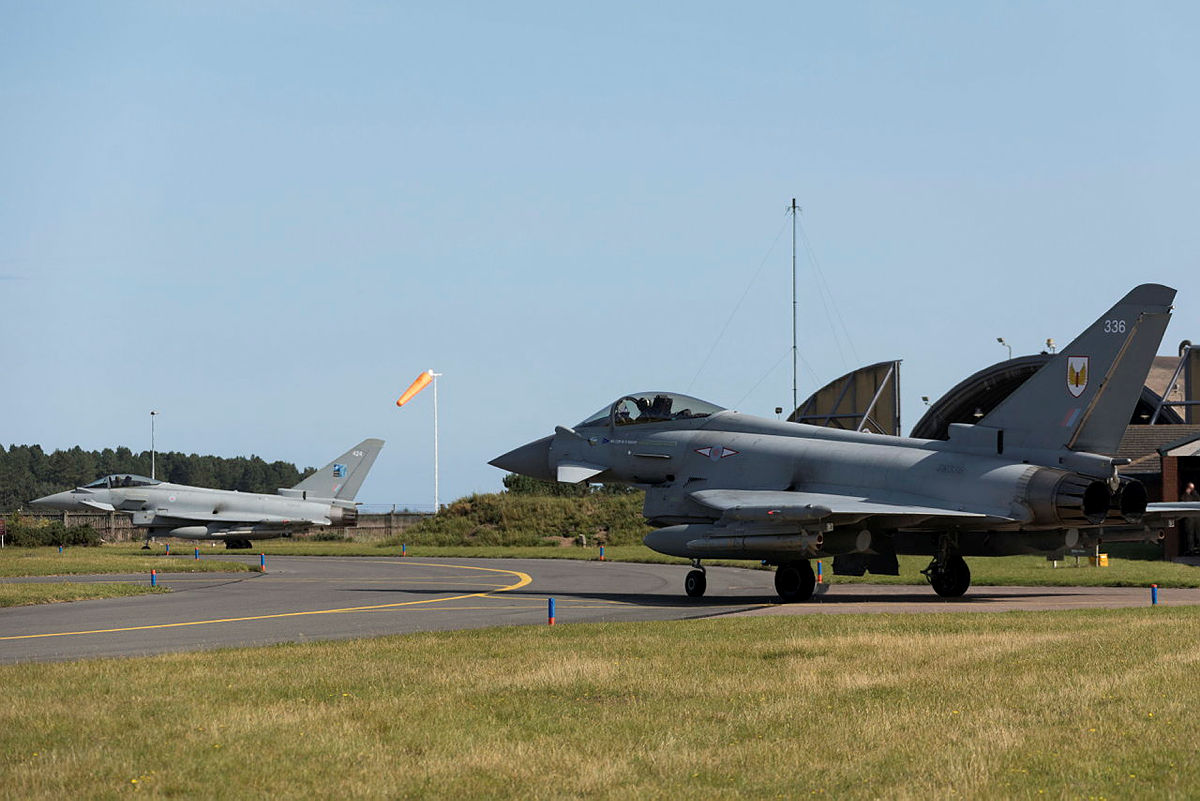
Two possible civil airport locations would be Bournemouth in the southwest and Teesside in the northeast, both of which are already used by commercial operators as well as by the contractor Draken Europe, from where the company provides adversary support and electronic attack missions using Dassault Falcon bizjets.
With relatively few RAF airbases in daily operational use, the ability to be able to disperse aircraft and launch sorties from elsewhere is also a useful option should any runway be out of action for other reasons, too. Only recently, RAF Brize Norton, home of the RAF airlift fleet, had to be closed after poor-quality resurfacing work led to the tarmac melting in the summer heat.
Although not mentioned by Wigston, RAF fighters could potentially also leave the British Isles entirely and head for a safer overseas location in times of tension. Last week, RAF Typhoons tested a “hot pit” refueling capability for the first time in Norway, as part of a proof-of-concept exercise to test the ability of the jet to operate from a dispersed location.
At the same time, U.K. Minister for the Armed Forces James Heappey spoke of the importance of “re-finding our ability to disperse and operate in a more expeditionary way [that] makes life harder for those who look at our home base and think that we’re sunk if missiles hit Lossiemouth, Coningsby, and Marham.”
The degree of protection that’s provided to RAF airbases, more generally, also seems to be a focus of Wigston’s concern. Compared to Russia, he said, “We’ve not kept pace in terms of air defense systems. We’ve not required ground-based air defense because of our strategic circumstances and the fact we were operating under a U.S. umbrella.”
For much of the Cold War, for example, there were Bloodhound surface-to-air missiles (SAMs) for area defense of these critical installations, as well as low-level Rapier SAMs operated by the RAF Regiment. This kind of organic air defense capability was finally given up in 2019 when the RAF’s Joint Ground Based Air Defense (GBAD) command was transferred to the British Army.
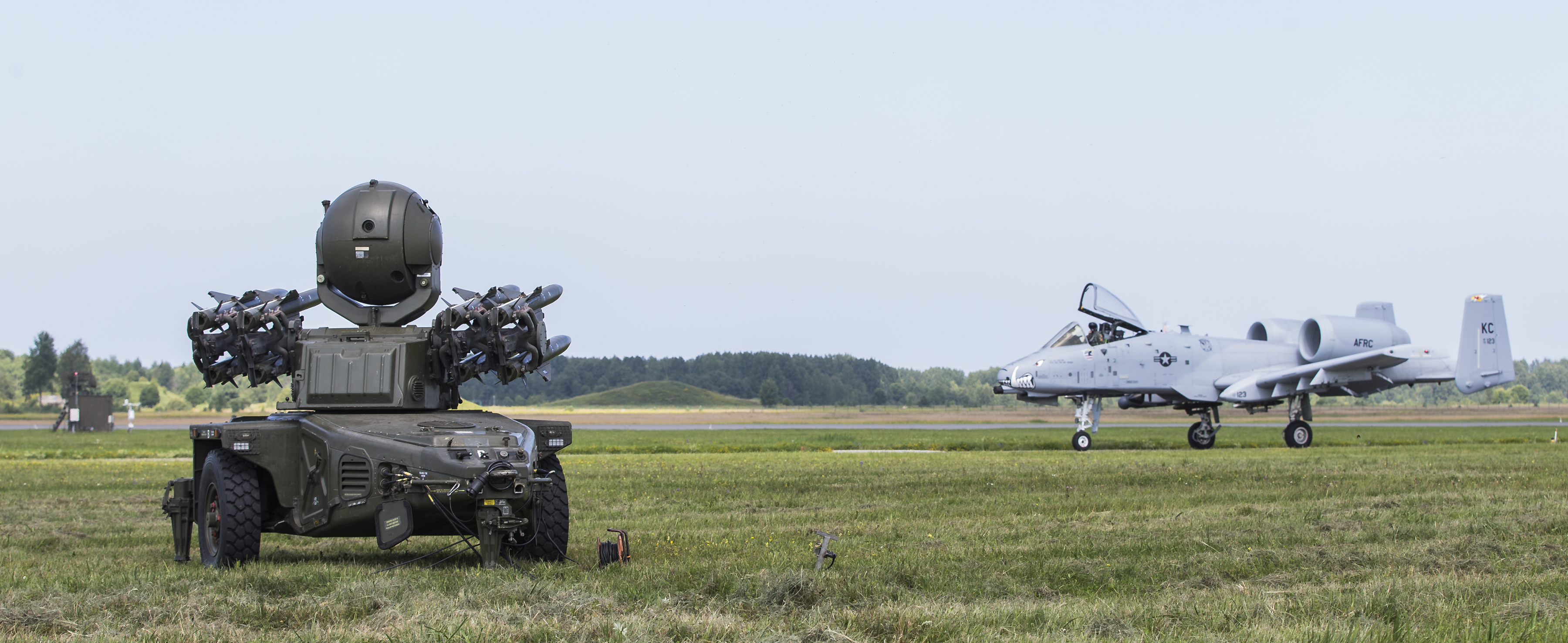
As for the potential operations from highway strips, these would obviously require more preparation, including removing roadside furniture — lighting, crash barriers, central reservations — before closing off the relevant portion and redirecting traffic.
The has been done in the past, with some observers bringing up the highway operations conducted by RAF Jaguar strike jets.
Most famous was the demonstration of April 26, 1975, when a British Aerospace test pilot landed a Jaguar GR1 on the M55 motorway between Preston and Blackpool, Lancashire.


According to the manufacturer, now BAE Systems, “The purpose of the flight was to demonstrate the Jaguar’s ability to land on unorthodox landing strips away from main airbases under wartime conditions — a key feature of the jet’s design.”
It’s notable, however, that the highway strip in question was located conveniently close to the company’s flight-test facility at Warton and the specific westbound carriageway had not even been opened to the public yet after it was built.
After a first deliberate overshoot of the landing strip, the jet landed safely and was ‘bombed up’ by armorers, receiving dummy ordnance before taking off again. It’s unclear if anything similar was attempted again in the United Kingdom, at least involving fast jets.
On the other hand, Cold War-era NATO tactical jets did make more frequent use of highway strips in West Germany, closer to the potential front lines of any conflict with the Warsaw Pact, and at least some of these incorporated provisions for use by aircraft. Speaking to The War Zone, Greg Bagwell recalled how the RAF based in Cold War Germany made use of specific lengths of Autobahn that were completed with reinforced concrete sections, central reservations that were at the same level as the highway itself, and with prefabricated dispersal areas roughly a mile and a half apart for refueling and rearming jets. These not only provided an alternative to airbases but could bring aircraft closer to their targets on the other side of the Iron Curtain.

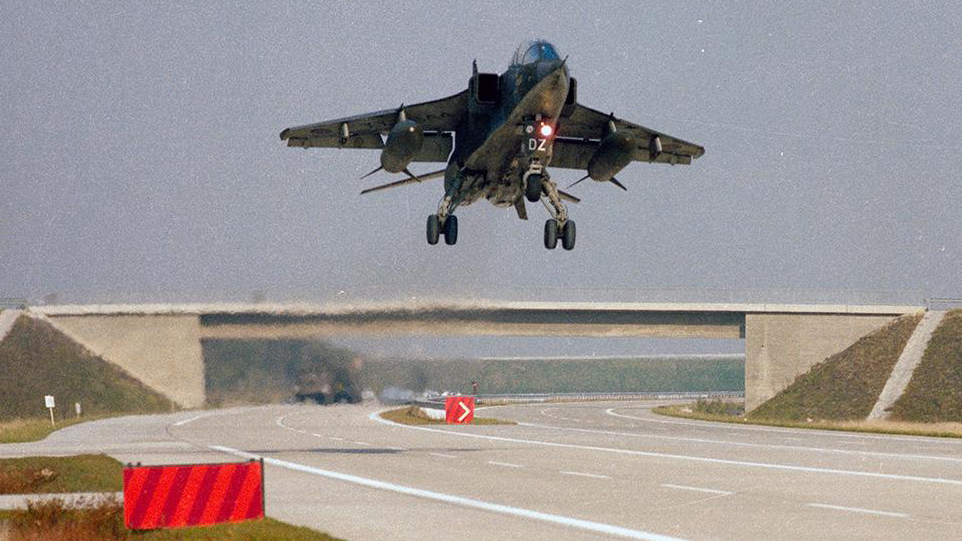


Similar contingencies are still in use with other European air arms, notably Finland and Sweden, where operating from highways is part of the standard doctrine. In Eastern Europe, too, some nations retain the tradition of periodically taking operations out onto the road, although most of the adapted highways constructed during the Cold War are long out of use. For the U.S. military, meanwhile, dispersed austere airfield operations have taken on a particular resonance in the Pacific, where the island of Guam recently hosted Air Force F-16s and F-35s at an austere airfield as part of a new strategy in the region, again largely driven by the threat of ballistic missile attacks.
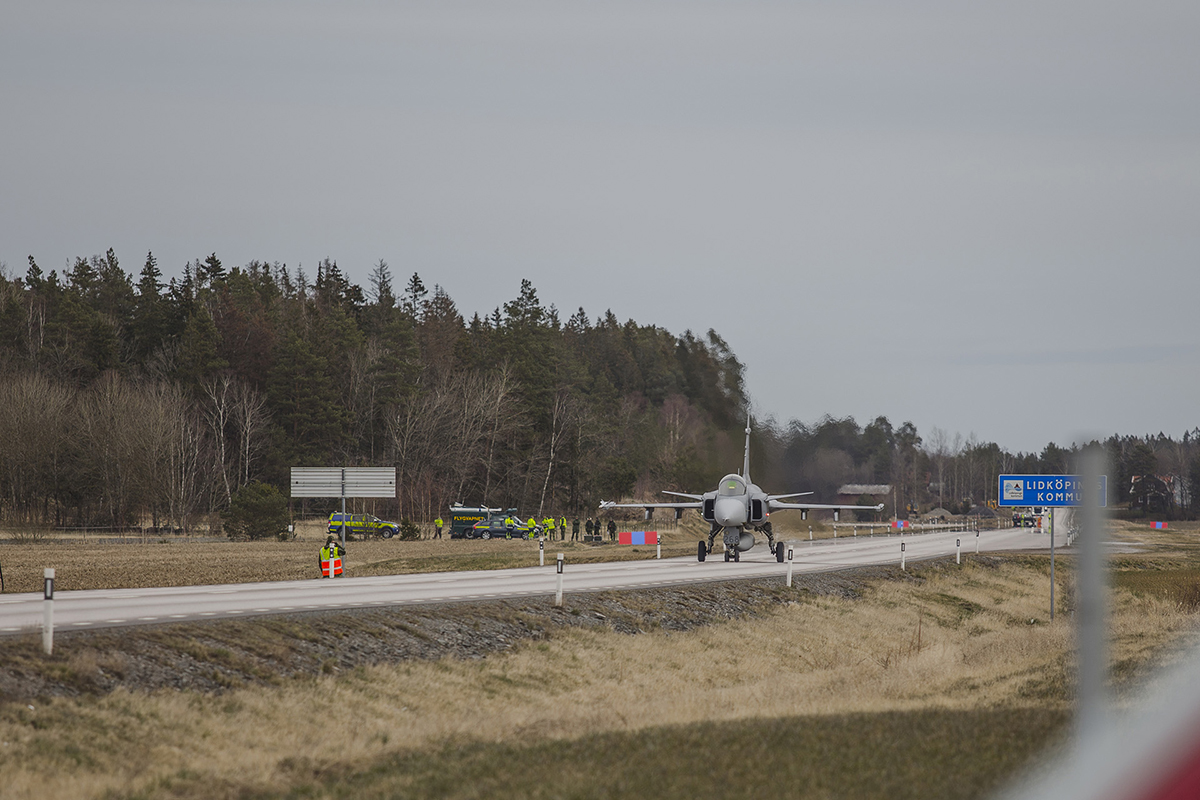
Ultimately, however, highway operations were always a rare occurrence in the United Kingdom, and the famous example on the M55 was probably intended to serve as much as a marketing tool for the Jaguar as a demonstration of a realistic wartime contingency. The RAF Harrier, on the other hand, had dispersed airfields as a fundamental part of its wartime concept of operations. The U.K.’s small fleet of F-35Bs could potentially be deployed in a similar manner, but are unlikely to be able to sustain operations in anywhere near as an austere environment as the Harrier.

Nevertheless, the fact that the commander of the RAF is willing to at least consider the idea of operating fighters from highway strips points to how seriously he and his colleagues are taking the potential threat posed by Russia and that country’s increasing ability to hold the U.K.’s key military infrastructure at risk.
Contact the author: thomas@thedrive.com
